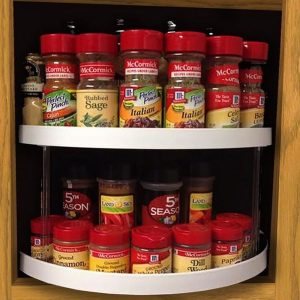Last Updated on April 28, 2025 by teamobn

If you’re looking for an easy and practical way to save money, coin banks are the way to go. Not to mention, they’re also a great way to get rid of those pesky coins that always seem to weigh you down.
Sure, coins might not seem like much when you have a few of them.
But when they start to add up, they can really start to weigh you down – both figuratively and literally. That’s where coin banks come in handy. With a coin bank, you can easily save up your coins until you have a nice little nest egg.
If you find yourself with a lot of spare coins, you may be tempted to spend them on unnecessary items just to get rid of them. However, this isn’t the best solution. A better solution is to put them in a coin bank. Over time, you’ll be surprised at how much money you can save this way. Plus, it’s a great way to teach kids the value of saving money.

You can even use recycled materials to make this self-sorting coin bank!
The hardest part comes when you finally open the piggy bank. You have to sort the coins by yourself so you can count how much you’ve saved. This can be a tedious task, but it’s important to know how much money you have.
As someone with several full coin banks at home, I have encountered this problem many times. But I spend zero effort in finding a way to make life easier for me. Luckily, someone has come up with a solution and shared it with the world.
All you need is a self-sorting coin bank. A self-sorting coin bank is a small machine that can quickly and easily sort your coins into different denominations. This makes it a breeze to empty out your coin banks, and you’ll save a ton of time in the process. I highly recommend investing in a coin sorter if you have a lot of coins at home. It’s a small price to pay for a lot of conveniences.

This is a great DIY project for anyone who wants a self-sorting coin bank. With this project, you can easily and efficiently sort your coins with no effort at all. This is a great project for those who love convenience and efficiency. Plus, it’s a really fun project to do and you can customize it to your own liking. So, what are you waiting for? Get sorting!
Crafting a Self-Sorting Coin Bank
Materials:
- MDF Material (your choice of wood)
- Bendy Straws
- 3.5mm Screws
- Foam Board
- Super Glue
Tools:
- 3.5mm & 6mm Drill Bit
- Jigsaw (Hacksaw)
- Right Angle Ruler
- 48″ Metal Ruler
- Electric Sander
- Eye Protection
- Portable Drill
- Gas Mask
Steps:
1. Prepare Your Work Area
Set up your workspace in a well-ventilated area. Wear your gas mask and eye protection. Gather all materials and tools so everything is within easy reach.
2. Measure and Mark the MDF Panels
Use the 48″ metal ruler and right-angle ruler to mark the panels for the base, sides, back, front, and internal dividers. Precision matters here to make sure coins sort correctly. Mark where you want your coin entry slots and internal ramps too.
3. Cut the MDF Pieces
Using the jigsaw or hacksaw, carefully cut out each panel along your markings. Take your time to ensure straight cuts. Double-check that the slots for coins are the correct width for your local currency sizes.
4. Sand the Edges
Use the electric sander to smooth all edges and surfaces. Smooth panels help coins roll better and prevent splinters when handling the bank.
5. Drill Holes for Assembly
Use the 3.5mm and 6mm drill bits to drill pilot holes for your screws. Drill holes where the walls meet and where you plan to attach the dividers inside. Pre-drilling prevents the MDF from splitting.
6. Assemble the Frame
Apply super glue along the joining edges first. Hold pieces together tightly and secure them with 3.5mm screws using the portable drill. Start with the base and sides, then add the back panel. The front panel can be installed last after setting up the internal structure.
7. Create and Install the Coin Ramps
Cut the foam board into narrow ramps that will help guide coins to different chambers. Glue bendy straws along the sides of the ramps to act as rails. This keeps coins moving along the correct path without falling out. Super glue these ramps inside the box at a slight angle so coins roll naturally by gravity.
8. Test the Coin Sorting
Before fully sealing the front, drop in a few test coins. Adjust ramp angles or widen narrow sections if coins get stuck. It’s better to troubleshoot now than after it’s all sealed.
9. Secure the Front Panel
Once the sorting system works, attach the front panel using super glue and screws. If you prefer easier access later, consider using small hinges instead of sealing it permanently.
10. Final Touches
Give the entire self-sorting coin bank a final sanding if needed. Decorate it with paint, stickers, or labels if you want. Make it your own.
11. Start Saving
Place your new self-sorting coin bank somewhere visible. Drop in your spare coins and enjoy how satisfying it is to watch them sort themselves.
How a Self-Sorting Coin Bank Works: The Simple Science Behind It
Saving loose change becomes a lot more satisfying when you watch it sort itself with no effort from you. A self-sorting coin bank uses simple principles of physics and design to do the hard work. Understanding how it works will make you appreciate just how clever these DIY projects are.
Coin Size and Slot Design
The most important part of a self-sorting coin bank is how it separates coins by size. Each coin has a specific diameter. The bank uses a series of slots or openings that are carefully measured. The first slot is wide enough to allow only the smallest coins to pass through. Larger coins keep moving until they reach a slot that fits their size.
It’s a simple, mechanical way of sorting without electronics or complicated sensors. Precision in cutting these slots is key because even a few millimeters off can cause jams or incorrect sorting.
Ramps and Gravity
Gravity does most of the work inside a self-sorting coin bank. Once a coin enters the top, it rolls or slides down an angled ramp. As it travels down, the coin encounters openings or obstacles sized to catch specific coins. Smaller coins drop into early chambers. Larger ones keep moving until they find a slot that fits. The angle of the ramp needs to be just right. Too steep and coins might bounce or pick up too much speed. Too shallow and they might not move at all. A gentle, controlled descent ensures that each coin gets sorted without damaging the structure.
Guides and Channels
Guides, like small rails or bendy straws, are used to control the path of the coins. Without these guides, coins might roll off course or get stuck against the sides. These simple barriers gently funnel the coins toward the correct sorting slots. It’s a clever use of physical space. Builders often experiment with the placement of these guides during testing to improve accuracy and efficiency.
Weight Differences: Optional Feature
Some more advanced designs even use the weight of the coins to sort them further. Heavier coins might trigger tiny levers or pressure plates. This adds an extra layer of separation beyond just size. However, most basic DIY models stick to size-based sorting because it’s simpler to build and more reliable over time.
Chamber Collection
Once sorted, coins drop into separate collection chambers. Each chamber holds only one type of coin. When it’s time to cash in your savings, you don’t have to spend hours separating different coins by hand. You just open the bank and each pile is already neatly organized.
The Beauty of Simplicity
The magic of a self-sorting coin bank comes from its simple design. It relies on basic physics instead of fancy technology. Anyone can build one with a little planning, the right tools, and an understanding of these basic principles. It shows how everyday objects and natural forces can work together to solve small but annoying problems.
Self-Sorting Coin Bank Gallery
Click on any image to start the lightbox display. Use your Esc key to close the lightbox.









Teaching Kids About Money Using a Self-Sorting Coin Bank
Teaching children about saving and the value of money is one of the best lessons you can give early in life. A self-sorting coin bank makes learning hands-on, fun, and easy to understand. Instead of using boring lectures or charts, kids can experience the basics of money management in a way they enjoy.
Making Saving a Daily Habit
One of the biggest advantages of a self-sorting coin bank is how it turns saving into a habit. When kids have a fun and interactive place to drop their coins, they’re more likely to think about saving regularly. Each time they drop a coin into the right slot and hear it clink into place, it gives them a small reward. These positive moments strengthen the connection between action and reward. Over time, saving money will feel natural rather than like a chore.
Understanding Coin Values Through Play
When children use a self-sorting coin bank, they start to recognize the differences between coin sizes, shapes, and values. Without realizing it, they learn to distinguish which coins are worth more and which are smaller denominations. This early exposure to recognizing and categorizing coins helps develop their basic math skills too. Some parents even add small challenges, like guessing how much is saved in each chamber at the end of the week, to make learning even more exciting.
Setting Simple Financial Goals
Kids love having a goal to work toward. A self-sorting coin bank makes goal-setting easy because they can see their money grow every time they add a new coin. You can encourage them to set small goals, like saving enough for a toy, a book, or a family outing. Once they reach their goal, they get to experience the reward of patience and discipline. These small wins create a strong foundation for bigger financial goals later in life.
Encouraging Responsibility and Independence
Giving a child their own self-sorting coin bank teaches them responsibility in a way that feels empowering. They take ownership of their money. They make decisions about when to save or when to spend. Even small lessons like being careful with coins, keeping the bank organized, and choosing when to open it foster a sense of independence. Over time, they learn that their financial choices have consequences, both good and bad.
Making Learning a Family Activity
Families can also turn using a self-sorting coin bank into a shared activity. Having a family savings challenge, where everyone saves their coins in their own banks and compares progress at the end of the month, can create healthy competition and motivation. It also opens opportunities for bigger conversations about money management, generosity, and even budgeting for future family events.
A Tool That Grows With Them
A self-sorting coin bank isn’t just a toy. It grows with the child. It starts by teaching basic coin recognition, then saving habits, then goal-setting, and eventually leads to conversations about budgeting and spending wisely. It’s a small, simple project that can have a big and lasting impact on how kids view and handle money for years to come.
Conclusion
Building a self-sorting coin bank is a fun and practical project that makes saving easier. It teaches valuable lessons about organization, patience, and money management. With a little effort, you’ll have a custom-made tool that’s both useful and rewarding to use.
We have more fun organization projects for your kids. Check out our denim pocket organizer next!






